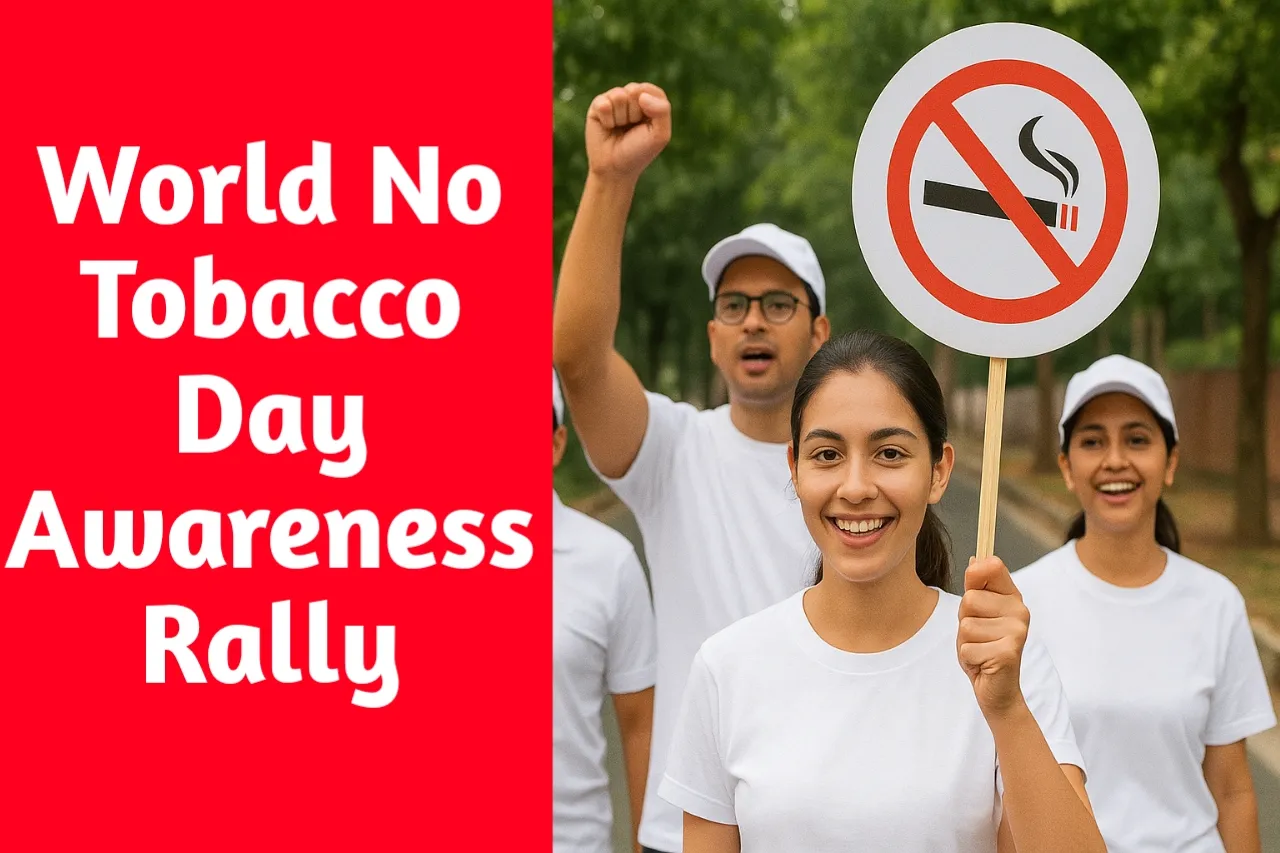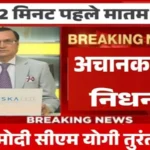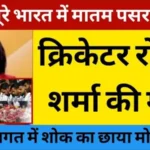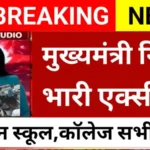World No Tobacco Day Awareness Rally : World No Tobacco Day, observed annually on May 31st, is a global initiative led by the World Health Organization (WHO) to highlight the health risks associated with tobacco consumption and advocate for effective policies to reduce its usage. In India, this day is marked by large-scale awareness rallies, community engagement campaigns, and educational initiatives.
The Objective of the World No Tobacco Day Awareness Rally
The World No Tobacco Day Awareness Rally aims to:
- Educate the public about the health hazards of tobacco.
- Mobilize youth and community organizations to campaign against smoking and tobacco chewing.
- Encourage policy enforcement and grassroots-level advocacy.
- Promote tobacco-free zones in schools, hospitals, and workplaces.
- Highlight the role of tobacco in causing non-communicable diseases such as cancer, heart disease, and respiratory illnesses.
India’s Battle Against Tobacco: A Growing Public Health Priority
India has one of the highest numbers of tobacco users globally. Despite significant regulations like the Cigarettes and Other Tobacco Products Act (COTPA), 2003, tobacco-related diseases continue to impose a heavy economic and health burden.
Key Statistics:
- Over 1.35 million deaths annually in India are attributed to tobacco use.
- Nearly 29% of adults in India consume tobacco in some form.
- Tobacco-related illnesses cost India approximately ₹1.82 lakh crore annually in healthcare and productivity loss.
Components of an Effective Anti-Tobacco Awareness Rally
An impactful World No Tobacco Day rally consists of well-organized, community-centric actions with strong visual and participatory elements.
Common Features:
- Marches and parades with banners, placards, and slogans
- Street plays and skits emphasizing the dangers of tobacco
- Health screening booths and cessation support information
- Student and volunteer participation from schools and colleges
- Public pledges to quit tobacco and encourage peers to do the same
- Media outreach via radio, newspapers, and digital platforms
Role of Educational Institutions and Youth in Anti-Tobacco Advocacy
The youth represent a crucial demographic in the fight against tobacco. Educational institutions play a pivotal role in awareness drives through:
- Forming NSS/NCC groups to lead the campaign
- Tobacco-Free Campus declarations under national guidelines
- Organizing poster-making competitions, debates, and rallies
- Peer-to-peer counseling and anti-tobacco clubs
- Use of mobile apps and social media for mass awareness
Impact of World No Tobacco Day Rallies
The rallies serve as more than just symbolic gestures. Their real-world impacts include:
- Behavioral Change: Increased awareness and decline in tobacco initiation among youth
- Policy Enforcement: Reinforcement of COTPA rules like bans on smoking in public and tobacco sales to minors
- Community Engagement: Empowerment of local communities to take ownership of anti-tobacco efforts
- Resource Mobilization: Collaboration between NGOs, health departments, and municipal bodies
Government and NGO Collaboration in Tobacco Control
Collaborative initiatives significantly amplify the impact of awareness rallies:
| Stakeholder | Role in the Campaign |
|---|---|
| Ministry of Health | Nationwide awareness campaigns and funding |
| WHO & UN Bodies | Technical support and global coordination |
| NGOs & Civil Societies | Ground-level mobilization and support for tobacco cessation |
| Police & Municipal Corporations | Enforcing anti-smoking rules and tobacco advertisement bans |
Key Slogans and Messages from the Rallies
- “Tobacco Kills, Quit Today!”
- “Be Smart, Don’t Start”
- “Say No to Tobacco, Yes to Life”
- “Pledge for a Tobacco-Free Generation”
These messages are spread through megaphones, printed materials, flash mobs, and local radio broadcasts.
How to Organize a Tobacco Awareness Rally: Step-by-Step Guide
- Define Objectives: Focus on awareness, policy enforcement, or community action.
- Mobilize Participants: Involve schools, colleges, NGOs, and health workers.
- Prepare Materials: Banners, posters, flyers, placards, and pledge cards.
- Secure Permissions: Coordinate with police and municipal authorities.
- Plan the Route: Identify high-footfall zones or public hotspots.
- Engage the Media: Inform press outlets, use social media hashtags.
- Document the Event: Capture photos, videos, and testimonials.
- Report Outcomes: Submit impact reports to local health departments or MyGov.
Supporting Tobacco Quit Efforts: What Happens After the Rally
Awareness alone is not enough. Post-rally efforts focus on support for individuals willing to quit:
- Tobacco Quitline (1800-11-2356): A 24×7 helpline for counseling and guidance.
- mCessation Program: Mobile-based support using SMS and WhatsApp.
- Pharmacological Support: Nicotine patches, gums, and medications via public health centers.
- Community Counselors: Trained health workers for door-to-door cessation awareness.
Conclusion
World No Tobacco Day rallies represent an essential, actionable component of India’s fight against tobacco. These rallies not only raise awareness but also activate entire communities to commit to a healthier, tobacco-free future. By educating, engaging, and empowering citizens, we lay the foundation for a generation that chooses life over addiction.
Let us rally together—for health, for life, for a tobacco-free India.








